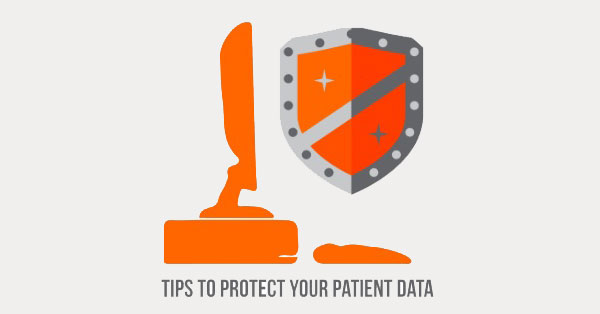
The wonders of technology have created a greater peace of mind for many medical offices and hospitals by providing a way to easily, effectively, and safely store and retrieve digital records. Nothing demonstrates this clearer than when a facility experiences an event that damages or destroys imaging and record-keeping equipment. As "set-it-and-forget-it" as backup and recovery technology can seem, these systems still require some proactive treatment.
Whether the event in question is disastrous for a single laptop (dropped on a hard floor) or for dozens of pieces of equipment across a network (flooding in your building's first couple of floors), the following are some industry best practices to help make sure that restoring access to your patient data can be quick and easy, freeing you to respond to the other urgencies that arise in a disaster recovery scenario.
Data Disaster Recovery Steps
Have a Plan
Putting a disaster recovery and backup plan into place is essential for protecting important patient data. If you try to deal with a disaster as it happens, you'll probably be too late. Put step-by-step procedures together ahead of time, that all employees and key personnel know, to guard against risks. For example, among other things, you'll want to appoint a recovery team, establish a notification calling tree to make sure the team can learn of and begin responding to the incident ASAP, and you'll want to make sure the credentials necessary to reclaim the data you've backed up are accessible to response team leaders.
Have Both Backup and Recovery
Data backup is about copying and storing files. If you have data that "lives" in only one place, how will you get it back if that laptop is dropped? Or if someone accidentally deletes something important? Or if that particular hard drive's number finally comes up and it crashes? This is where backup comes in. With a backup solution, whether it's an external hard drive, a mini PACS system, or something cloud-based, you can quickly pull the backed-up file and copy it to the new laptop/hard drive or to the computer where that certain someone experienced an "isolated moment" of carelessness.
Data recovery, on the other hand, operates on a larger scale. IT managed services provider, NSK Inc. offered this nutshell description: "Disaster recovery is similar to backup but is used for larger instances. A complete image of your disk drives and servers [is] mirrored. The image allows you to restore the system quicker than reinstalling an OS and copying files." We don't even care to imagine running restoration backup-style across what could be hundreds of machines!
Because destructive events that risk data loss can occur both on individual devices and across an entire network of viewing stations, PACS storage systems, administrative desktops, and imaging workstations, we believe that any medical facility's ability to bounce back is best served by securing both a backup and a recovery solution.
Have Redundant Data Protection
Digital record data redundancy is key to disaster recovery. A one-two punch is recommended: local data storage, like a PACS server in your IT department, for fast and easy data recovery, and offsite data storage on a PACS server stored at a data center or through a cloud-based provider for added protection against extreme instances like flooding or a fire. Having both in place offers peace of mind and greater speed of play in your recovery efforts.
Maintain Regular Testing
Regular testing is essential to ensuring that all of your data tools/services and, thereby, your disaster recovery plan are functioning as they should. Testing will confirm that backups are happening at their scheduled times, that they are storing the correct data, and that all the members of your team are ready and able to follow the steps and regain their data access. Talk to your IT administrator or your backup and recovery provider(s) about implementing a regular testing schedule at your facility.
Monitor and Maintain Your Systems
Software and service providers will periodically recommend system updates. It is important to always install these recommended system updates, whether they are for security features, added functionality, or bug fixes, to make sure your network and all ancillary systems continue to function properly.
Have Self-Healing Technology
Some software and service providers will offer systems that have "self-healing" technology built into the system. This means that the system will automatically restart failed services and automate common fixes so that, should anything happen, your system can likely be up and running again before you even realize it was down. This minimizes downtime and helps ensure that patient data is properly sent to storage.
The Takeaway
For some, implementing all six of the practices above might seem four or five times redundant, but when an equipment disaster happens, from a spilled drink on a single computer to an accidental activation of a fire sprinkler on an entire floor, the more of these you have in place, the more likely you'll be to recover completely and with greater speed.
To get started on your disaster recovery plan, you'll need to discern which type of PACS solution will best fit your facility's needs for MRI, CT, X-ray, and more.

Mackenzie Dryer
Mackenzie Dryer is a Technical Operations Lead at Block Imaging. Her goal is to ensure internal operations between project management and engineering run smoothly, with the goal of delivering excellence to clients. When she’s not helping move imaging projects along, Mackenzie can be found traveling with her family, reading, or performing in musical theatre.




